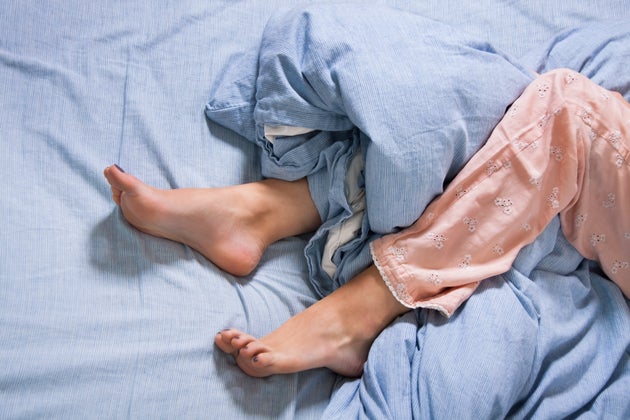
It’s hot. Some of us have been sweaty. It’s a good time of year to consider how often we change our bedsheets – those potential breeding grounds for microscopic life that could even threaten our health.
Allowing dust, sweat and dirt to build-up for just two weeks can be enough to leave you with a scratchy throat or the sniffles, according to New York University microbiologist Philip Tierno – especially if you suffer with allergies. And for those who tend to leave their bedding to fester unchanged, it’s worth noting that doing so can allow sweat and dirt to seep into your pillows and mattress.
So how often should we be stripping and washing our duvet covers, pillowcases and sheets?
[Read More: How many hours sleep do you really need? And what happens if you don’t get them?]

How often should we change our sheets?
The general consensus is that we should all be changing our sheets – including duvet covers and pillow cases – once a week, argues Tierno. However Professor Val Curtis, from the London School of Hygiene & Tropical Medicine, tells HuffPost UK she doesn’t believe leaving your sheets on for a few extra weeks will lead to health problems.
But, doing so might not look or feel great: Prof Curtis advises people to change their bedding once a week for “aesthetic reasons”.
[Read more from HuffPost Life: The Sleep Edition here]
Should we wash our duvets, too?
We should be giving our duvet a six-monthly clean or – at the very least – washing it once a year, according to The Fine Bedding Company. Bacteria and bodily fluids build up in duvets over a short period of time, the company argues, with duvet covers and pyjamas merely acting as a “first line of defence” against sweat.
How you wash your duvet will depend on two things: the type of duvet you have and how big your washing machine is.
Obviously, check for care instructions on your duvet first and follow any instructions. But in general, natural-filled duvets (think: feathers and down) should not be washed and dried at home, regardless of the capacity or capability of your machine. Most dry cleaners will launder this type of bedding and it’s essential that natural duvets are thoroughly dried – otherwise the filling may start to rot.
[Read More: I said I wouldn’t co-sleep – and then I did it with both my children]
When it comes to synthetic duvets, these are usually fine to wash at home. For larger or higher tog duvets – ie your winter ones – it’s usually recommended that they are washed in a large capacity machine. For example, a 9kg drum should comfortably accommodate a king-sized duvet. (If your washing machine isn’t big enough, try taking your duvet to a local launderette.)
What about washing pillows?
Yep, they should get cleaned, too. A 2005 study analysing fungal spores on 10 different pillows that were between 1.5 and 20 years old, found that every single one had four to 16 different species of fungus living in it.
Lead researcher Professor Ashley Woodcock, from the University of Manchester, said at the time: “We know that pillows are inhabited by the house dust mite which eats fungi, and one theory is that the fungi are in turn using the house dust mites’ faeces as a major source of nitrogen and nutrition. There could therefore be a ‘miniature ecosystem’ at work inside our pillows.”
It’s recommended that pillows are washed more frequently than duvets: around four times a year – or every three months, according to The Fine Bedding Company.
Most pillows filled with synthetic fibres can be machine-washed at 40oC or 60oC – but check the care label first. Natural pillows typically require professional cleaning.
If you don’t want to wash them regularly, adding a pillow protector can prolong the need to wash the actual pillow itself, and these can be washed frequently and easily.